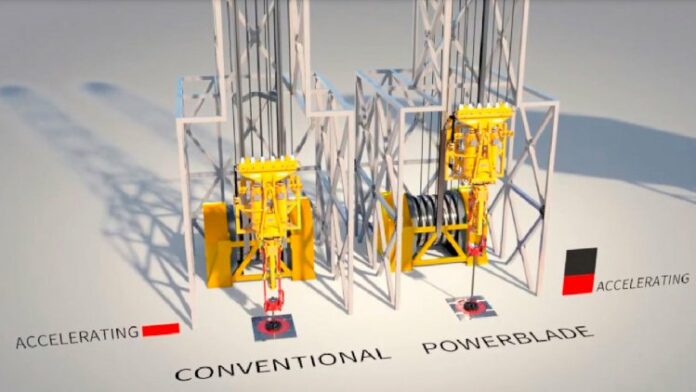Kinetic Energy Recovery Systems (KERS) are a proven technology widely used in Formula One racing vehicles and NASA exploration spacecraft, recovering a moving vehicle’s kinetic energy while braking, storing it in a reservoir (flywheel) for later use under acceleration.
On most drilling rigs, the load on the hook is raised and lowered by the drawworks. During active heave compensation, tripping, and all block movement, the AC drawworks motors generate electricity when slowing and stopping the load. The “excess” energy is dissipated in braking resistors as heat.
The NOV PowerBlade is a KERS system that preserves that lost energy to cut fuel costs and cut emissions while increasing operational safety and reliability.
During operation, the PowerBlade system captures regenerated electrical energy when the drawworks, crane or winch slows and stops the load on the hook. The PowerBlade stores this as kinetic energy using a flywheel that accelerates and gathers speed, capturing energy from vessel rising and block lowering during active heave compensation. This energy is then recycled and utilized to put power back onto the power grid when needed. The spinning flywheel is housed inside a PowerBlade unit and rotates between 1,000 and 2,000 RPMs, charging and discharging energy in a safe fashion.



